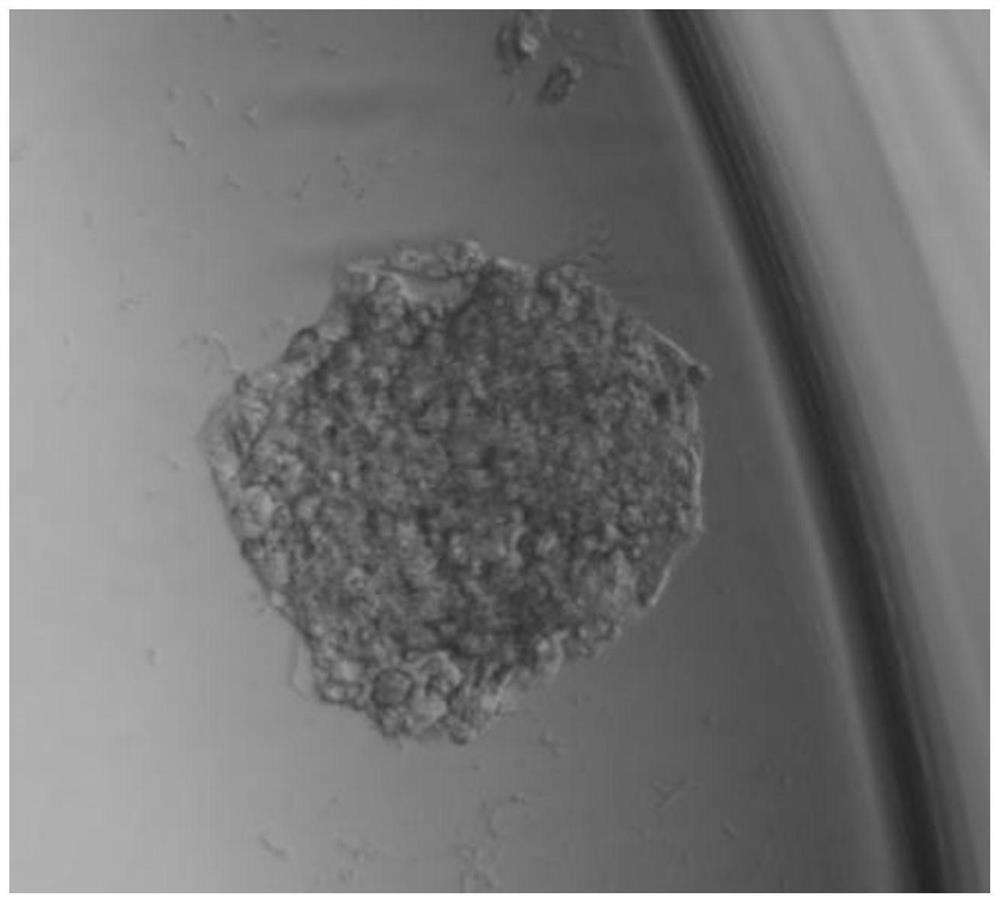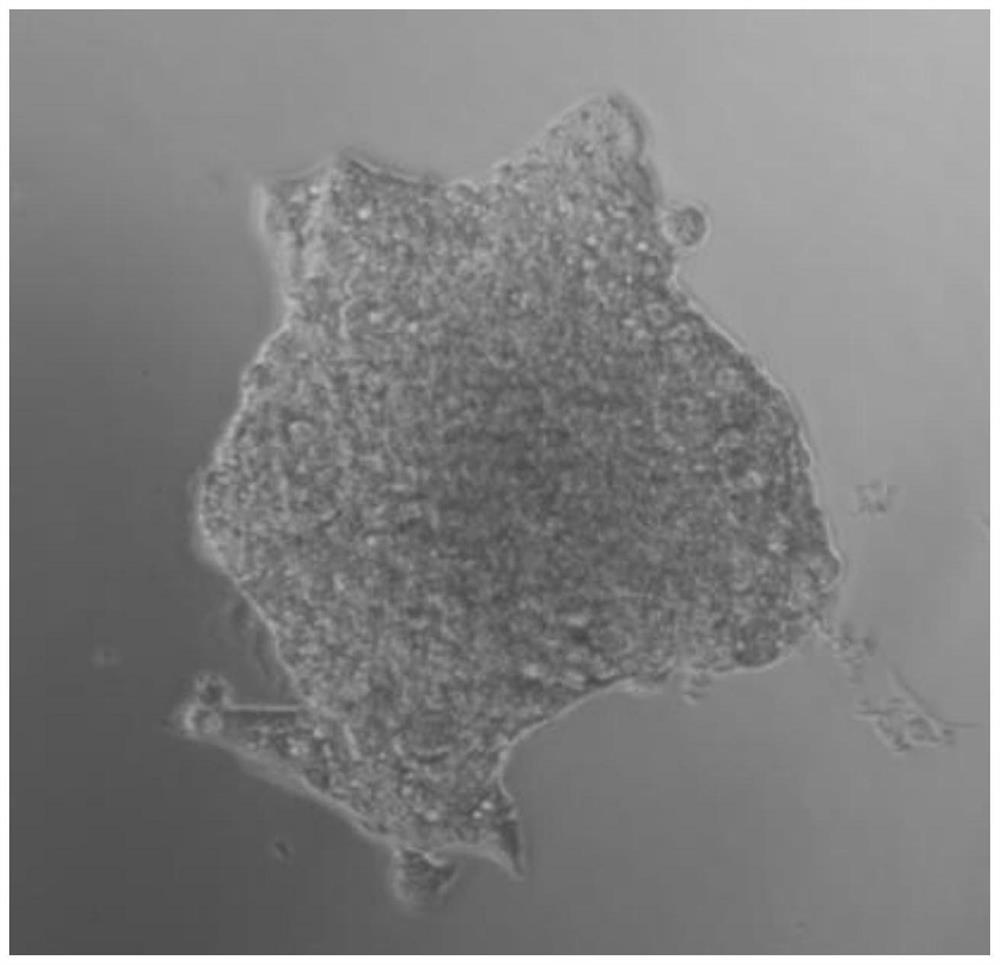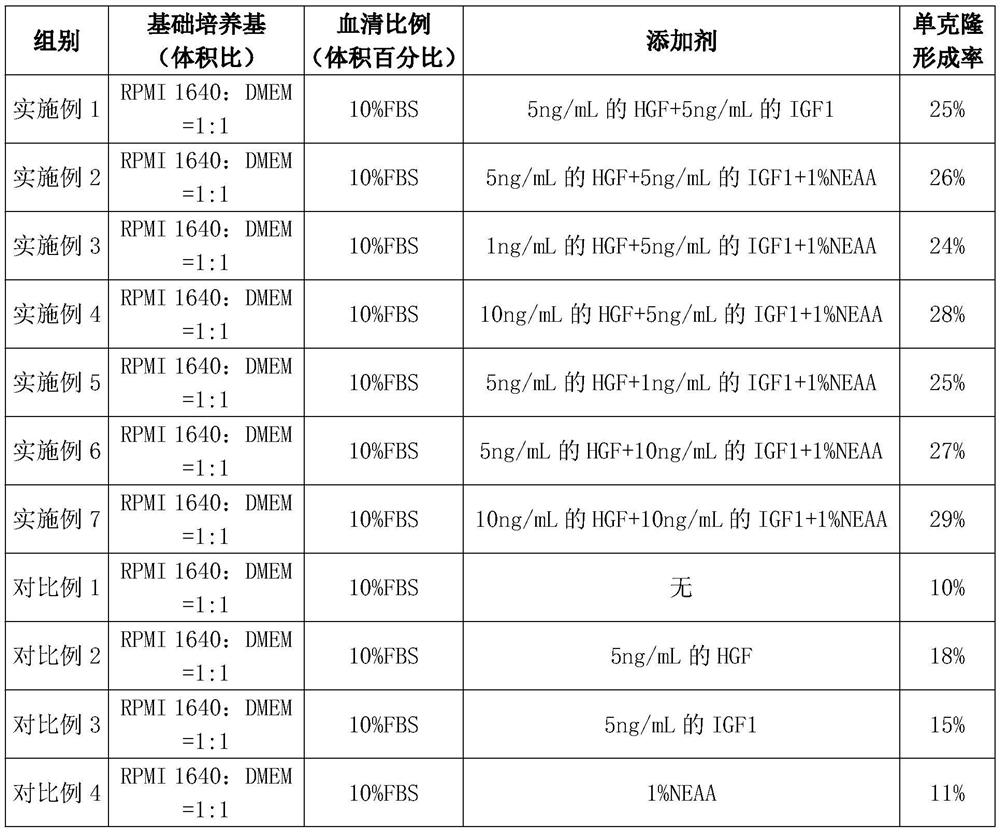Monoclonal enhanced culture medium and method for improving HepG2 cell clone formation rate
A cell culture and culture medium technology, applied in the field of HepG2 cell cloning, can solve the problem of low monoclonal formation rate of HepG2 cells, and achieve the effects of improving the monoclonal formation rate, fast growth rate, and increased clone formation rate.
- Summary
- Abstract
- Description
- Claims
- Application Information
AI Technical Summary
Problems solved by technology
Method used
Image
Examples
Embodiment 1-7
[0070]A method for improving the clone formation rate of HepG2 cells, comprising the following steps:
[0071] (1) Primary culture and subculture of HepG2 cells are carried out in the following order;
[0072] Specifically, in step (1), the operation steps for primary culture of HepG2 cells are as follows:
[0073] (1.1.1) Preparation materials: DMEM complete culture medium, T25 culture bottle, 15mL centrifuge tube, 10mL serological pipette, waste liquid tank, alcohol cotton, etc.;
[0074] Preparation: Preheat the complete culture solution in a 37°C water bath for 30 minutes, then remove the frozen cells from the liquid nitrogen, transfer them to a -80°C refrigerator, and let the residual liquid nitrogen evaporate for 5 minutes;
[0075] (1.1.2) Use a straw to draw 6mL of complete culture solution into a 15mL centrifuge tube in the ultra-clean bench;
[0076] (1.1.3) Take the HepG2 cells out of the -80°C refrigerator and temporarily place them in dry ice, and shake them sli...
PUM
 Login to View More
Login to View More Abstract
Description
Claims
Application Information
 Login to View More
Login to View More - R&D
- Intellectual Property
- Life Sciences
- Materials
- Tech Scout
- Unparalleled Data Quality
- Higher Quality Content
- 60% Fewer Hallucinations
Browse by: Latest US Patents, China's latest patents, Technical Efficacy Thesaurus, Application Domain, Technology Topic, Popular Technical Reports.
© 2025 PatSnap. All rights reserved.Legal|Privacy policy|Modern Slavery Act Transparency Statement|Sitemap|About US| Contact US: help@patsnap.com



